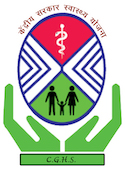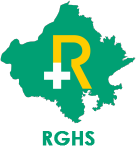Like other kind of the arthritis, inflammation of the joints and pain is the main thing which occurs in case of psoriatic arthritis. Psoriatic arthritis (Ps A) occurs because of the malfunctioning of the immune system. This condition belongs to the family of the rheumatoid arthritis. But this condition appears specifically in few patients who suffer from psoriasis. Medicines doesn’t work in this disease successfully. Ayurveda treatment of psoriatic arthritis can help you to revive your joints completely. Here we will discuss about all aspects of this disease and about Ayurvedic treatment too.
This is not necessary, this condition will appear always with Psoriasis. In many patients, this condition might appear without any skin rashes of psoriasis. But when this condition appears without involvement of the skin, it becomes hard to diagnose the condition.
Psoriatic arthritis generally occurs slowly and gradually. For some people, the skin symptoms usually appear first, while for orders, the joint symptoms are first.
The Joint tissue becomes inflamed that leads to pain, swelling and stiff. PsA appears in most of the cases in the joints of lower limb like- Knee and Ankle. But can also impact small joints of fingers too. Besides this sacroiliac joint and spine can also effect with PsA.
Facts of Psoriatic Arthritis:
- This disease is a skin condition that affects 2% of white and light-skinned people of the whole US population.
- A major risk factor for a person to develop Psoriatic Arthritis is due to having a family member with skin cells to multiply up to 10 times faster than usual. It plays a very significant role to the doctors for the health history in their diagnosis.
- About 15-25% of the people with skin disorder causes up to 10 times the multiplication of cells faster than the usual.
- It can be treated independently with ice-application, medication, exercise and surgery.
- All Complications for Psoriatic Arthritis are avoidable by medical treatment aggressively.
Psoriatic Arthritis consists of majorly 5 types –
- Affecting the same joints on both sides of the body
- Affecting the joints on just one side of the body.
- Infected or affected joints of the backbone
- Articulations between the phalanges of the hand or foot.
- It is also characterized by the resorption of bones and the consequent collapse of soft tissue.
Medication for reducing the pain, swelling, redness can be given. Injections for steroids and replacement of surgery are also useful for Treatment.
Signs & Symptoms of Psoriatic Arthritis
Immunity plays a very vital role in the signs and symptoms like patches, raised areas of skin and scaling
- Symptoms like
- Pain in Joints
- Problem with movements of joints.
- Swelling in Joints
- Body stiffness with pain in joints in morning hours.
- pain in feet,
- Tiredness
- Swollen toes and fingers
- Areas of the body like eyes, lungs, parts joining muscle to a bone becomes sore, swollen or red due to infection.
- There can be severe pain and stiffness in the lower back, buttocks, neck and upper back.
Other symptoms like limping, pain while walking, while climbing stairs. Skin disorder can affect the elbows, the knees, naval, anus, genital areas, the scalp and the ears.
Causes of Psoriatic Arthritis
The cause of Psoriatic Arthritis is presently not very sure for the scientific community. There are many factors like genes, immunity and environment that play an important role in the pathology of this disease altogether. Everything is similar to any other autoimmune condition.
The main and only difference is- association of this condition with “skin patches of psoriasis”, which is not an “always” condition.
Hard to say that psoriasis causes this condition of psoriatic arthritis. But if we want to draw an affinity between these two conditions, best word is- these generally occur together. And because this arthritis occur in patients with psoriasis, we name it psoriatic arthritis.
How Does Psoriatic Arthritis occur?
The answer to the question about the process of this type of arthritis, it is just impossible to comment anything with confirmation. Only Ayurveda has answers for these questions but in modern medicines the answer is completely hypothetical.
As per modern day theories- T-cells when activated these activate the TNF inhibitors and this leads to the damage of the cartilages in the joints. Just like any other type of the autoimmune arthritis.
But Ayurveda has different approaches for the things.
And here we need to know about the approach of Ayurveda on Psoriatic Arthritis.
Ayurveda about Psoriatic Arthritis
Unlike western medicine, Ayurveda has deeper approach for this type of joint problem.
Ayurveda talks about two conditions where skin and joints both are affected. These are –
- Vata Rakta: The disease of impure blood which aggravates the Vata.
- Dhatugat Kushtha: The skin ailment which involves different dhatus.
Many people often confuse between these two conditions. But when it comes to plan a treatment, confusion has no place. Therefore Vaidya Dr. Pardeep Sharma makes this remark to completely differentiate these two conditions from one other-
Vata Rakta is simply a condition with inflamed and blocked small blood capillaries. Which is not not the condition about the “psoriatic arthritis”. Secondly, Vata rakta joint pain is more in toes and fingers but psoriatic arthritis pain is more in the big joints. When we work on any disease or condition- confusion kills the treatment and hope of better life.
Vaidya Pardeep on Psoriatic Arthritis and Ayurveda
So for Sukhayu, the treatment is all about Dhatugata kushth.
Ayurveda believes in seven-dhatus. These dhatus represents the seven different tissues. Kushtha is – skin disease. When this disease appear in different tissue level, it causes different things.
When Kushtha appears in the Mamasa (Muslces) and Asthi (Bones)- this leads to the condition of- Psoriatic Arthritis.
A bit more explantion!!
Yes, for sure.
Psoriatic Arthritis as Asthi-Mamasa Gata Kushtha
Ayurveda leaves very simple, but strong symptoms while discussing the different conditions.
नासाभङ्गो अक्षिरागशच क्षते च क्रिमिसंभवः ! भवेत् स्वरोपघातश्च हि अस्थिमज्जा समाश्रिते !!
This verse from Sushruta translates –
- Decay of nasal cartilage
- Redness in the eyes
- Decay in body
- Loss of the Voice
Amazingally when we look at the modern research about psoriatic arthritis, we find these amazing facts-
RED EYE
Rheumatoid arthritis, ankylosing spondylitis and psoriatic arthritis are associated with potentially sight-threatening inflammatory eye disease.
https://www.sciencedirect.com/science/article/abs/pii/S1521694216300808
DECAY OF NASAL CARTILAGE
Septal perforation has also been reported in related entities such as psoriatic arthritis!!
https://www.ncbi.nlm.nih.gov/pmc/articles/PMC1906294/
More we know about Ayurveda and put the riddle in right place- it helps in right diagnosis and exact treatment.
So finally we have something to treat the condition of psoriatic arthritis according to principles of Ayurveda.
Here we will talk about the treatment of the condition of this psoriatic arthritis.
Ayurvedic Treatment for Psoriatic Arthritis
When you have a diagnosis, you have treatment.
And when it is exact diagnosis, treatment becomes exact!
Same applies with the psoriatic arthritis.
We treat the condition of the psoriatic arthritis according to the condition of Mamsa and Asthigata Kushtha.
We do it with medicines, panchakarma and diet all together.
Ayurvedic Medicines for Psoriatic Arthritis
There are certain combinations like-
Panchatikta Ghrita guggulu and Maha Tikta Ghritam, which have clear mentions their role in the treatment of the psoriatic arthritis. There are many other combinations like these two. But these medicines are mostly helpful in many conditions when we chose these wisely.
This is not about using the medicines only. This is moe like using the right medicines.
These Ayurvedic medicines are aimed to help the patients with psoriasis and psoriatic arthritis both.
Panchakarma for Psoriatic Arthritis
Panchakarma is the key for most of the autoimmune conditions, so is this for psoriatic arthritis.
What comes first needs to be treated first.
When this is psoriasis, we need to treat this first. And in cases where arthritis appears first- we need to treat arthritis first.
So we go for Vamana and Virechana in case where we need to control the psoriasis first hand. But Basti becomes the choice of the treatment when it is about arthritis first.
Everything depends on the requirement of the patient.
How to go for the treatment of psoriatic arthritis
Before any suggestions- you need to go for consultation, with Vaidya Dr. Pardeep or Vaidya Dr. Neetu.
The duration of the treatment all depends on your condition.
For a severe case where we need to go for either Vamana or Virechana- you might need to admit with us for 21 days. And in case of basti – it might be 16 days only.
But this stay at hospital is required only in few cases. Only 20-25% cases need to go for admission.
In rest of the cases you can just start the Ayurvedic medicines from your home after the consultation.













